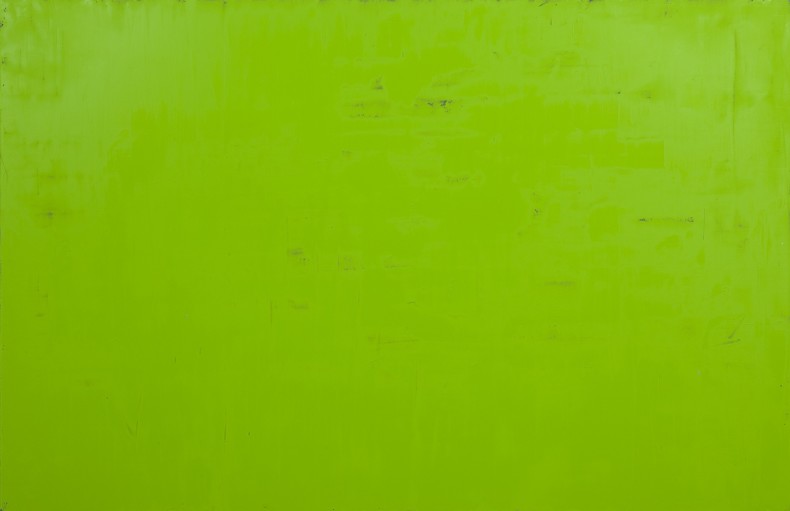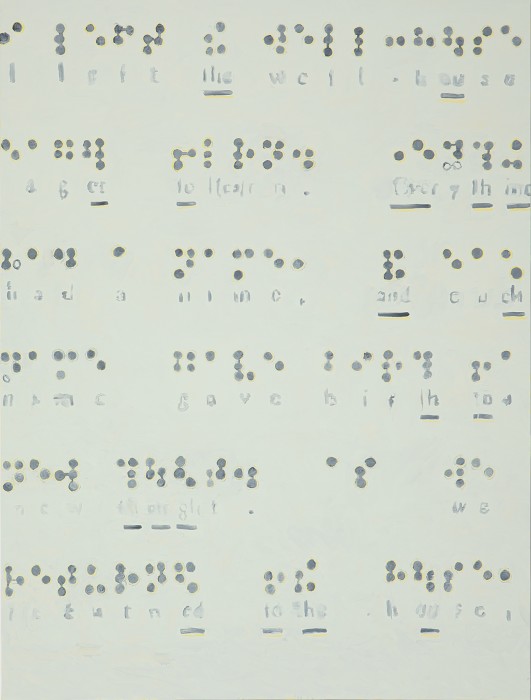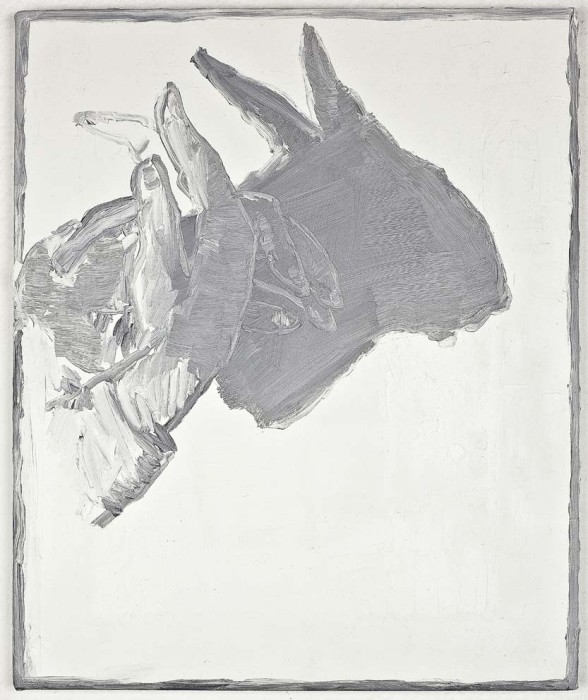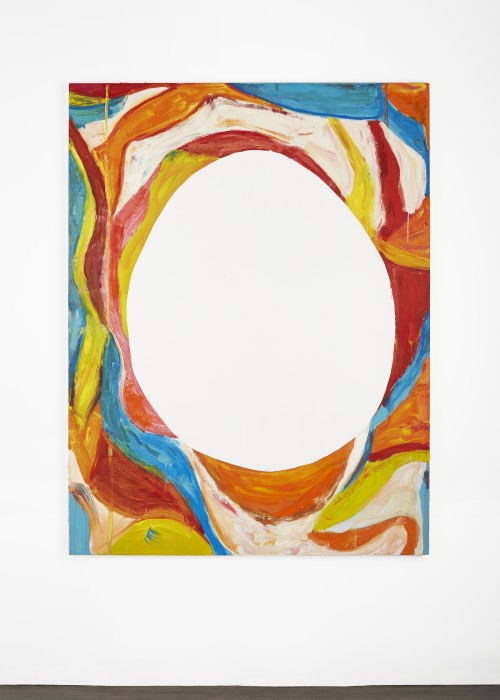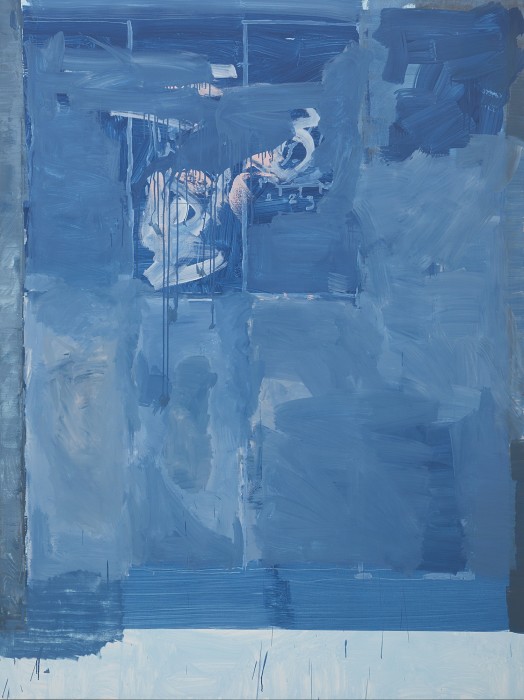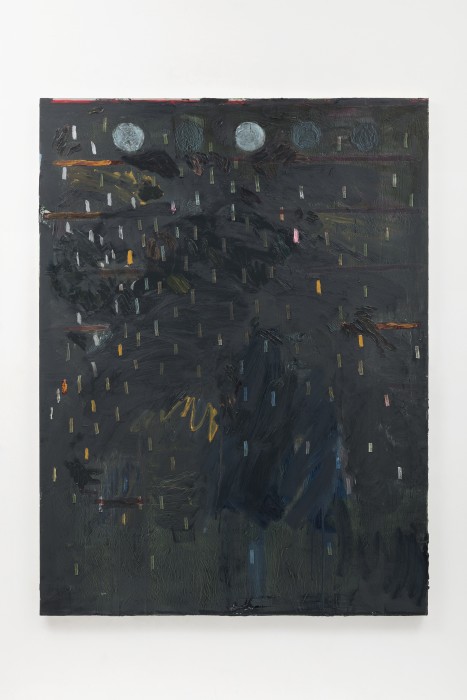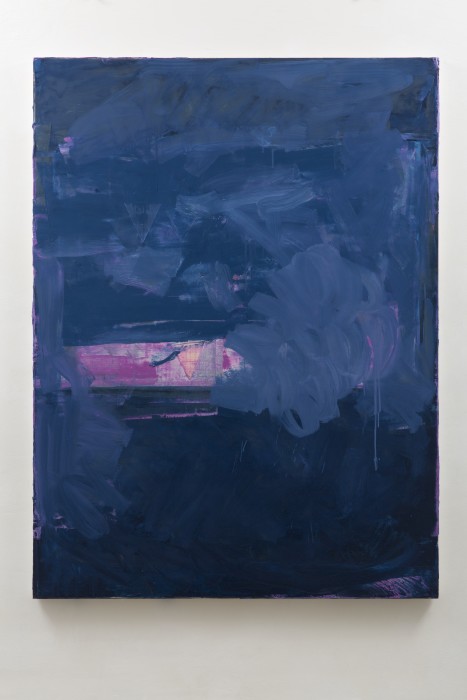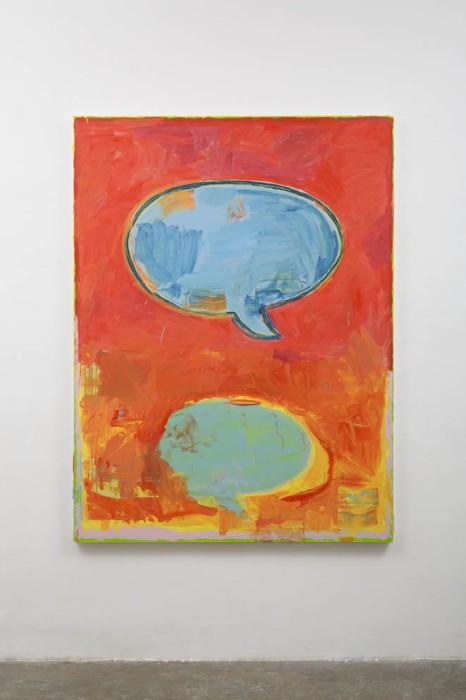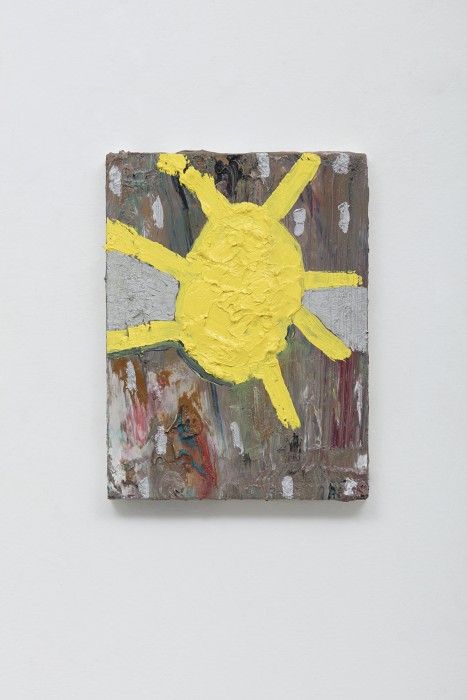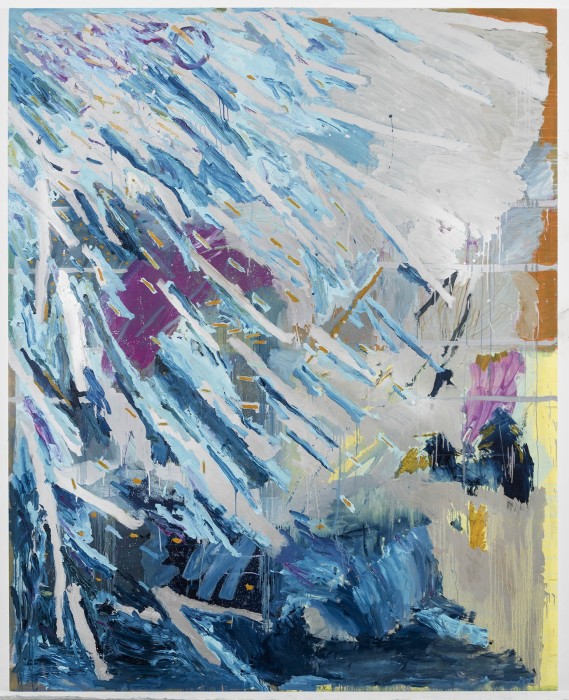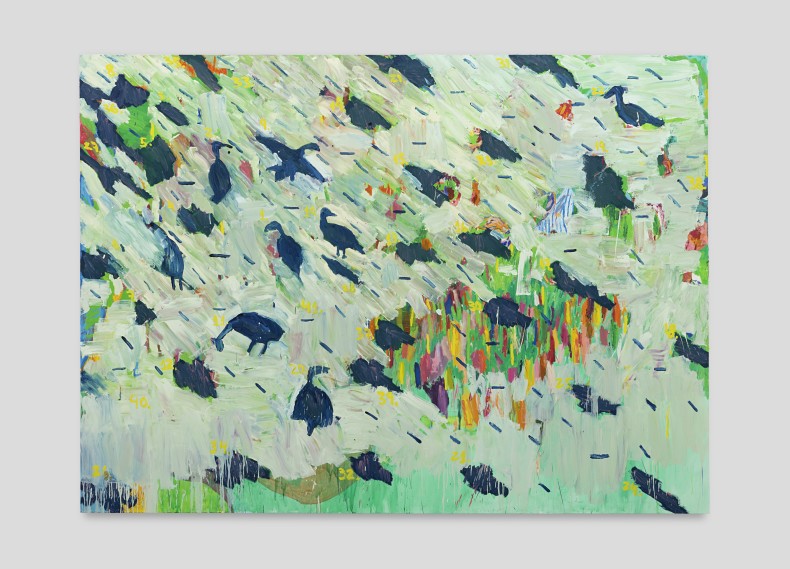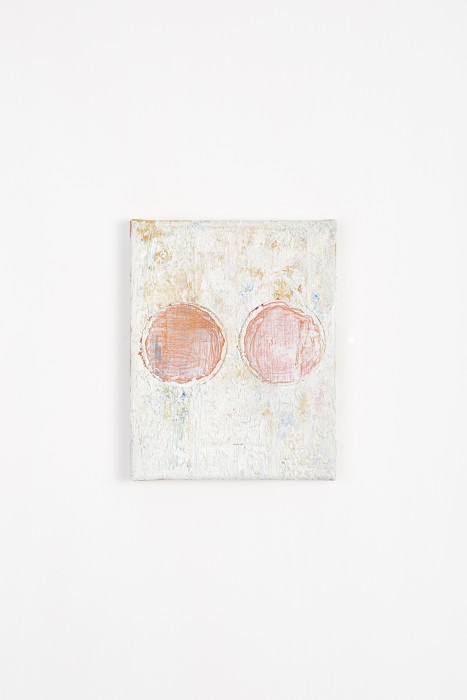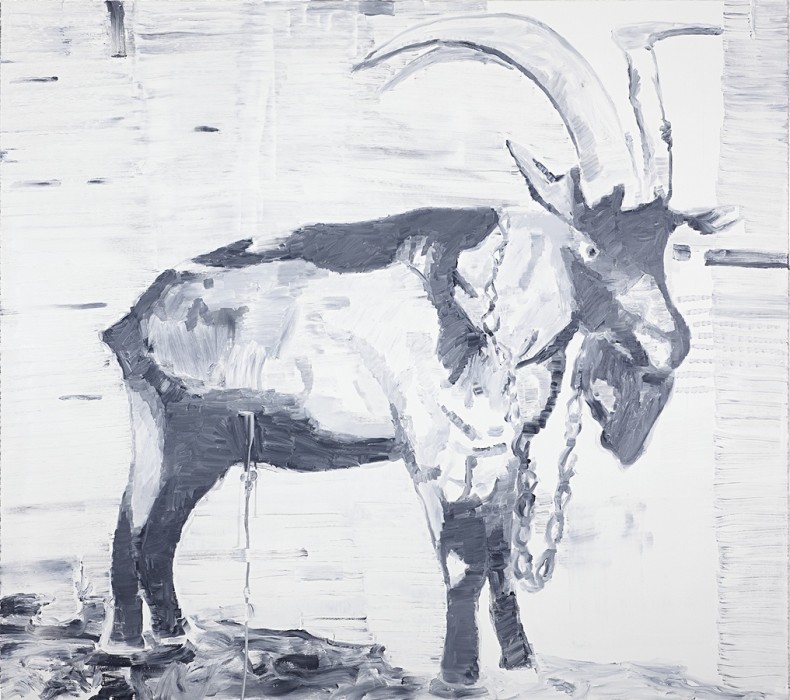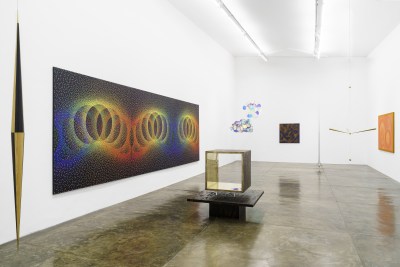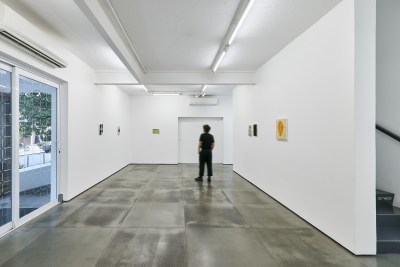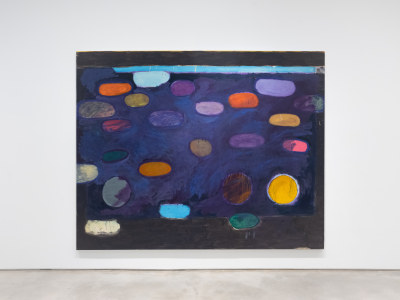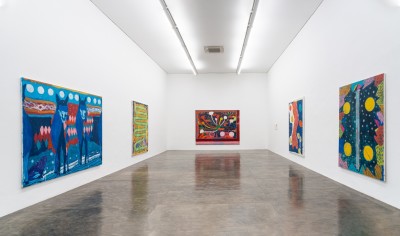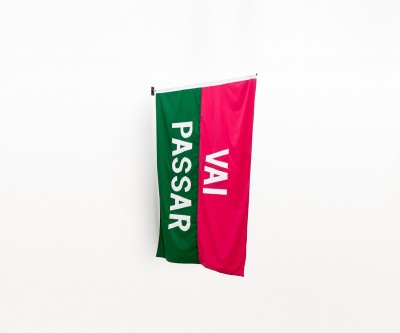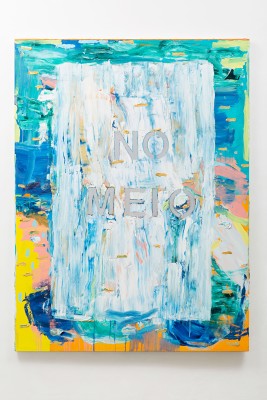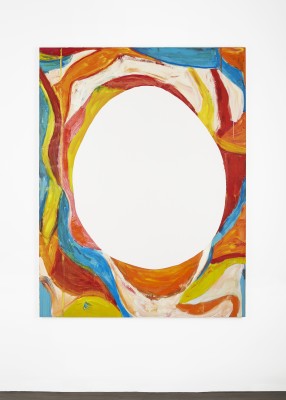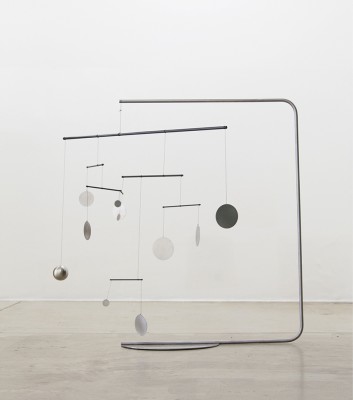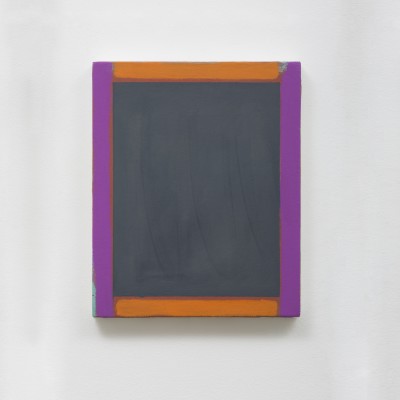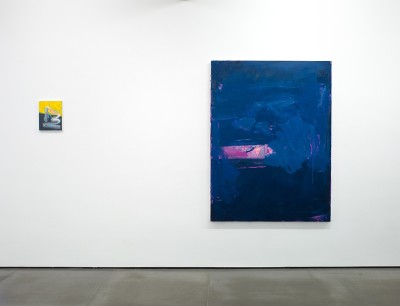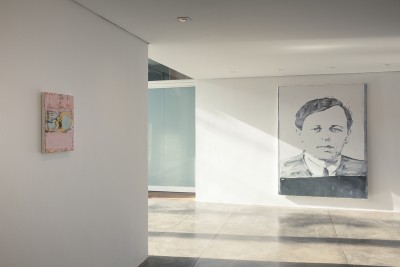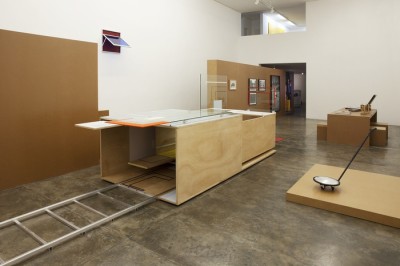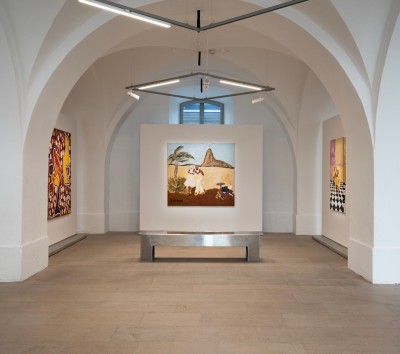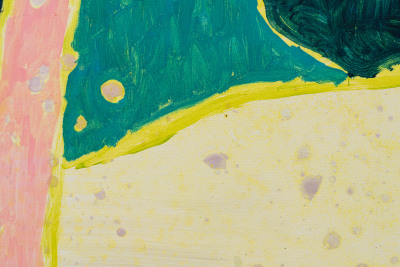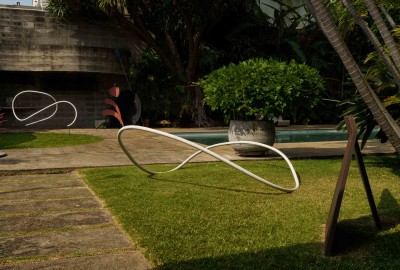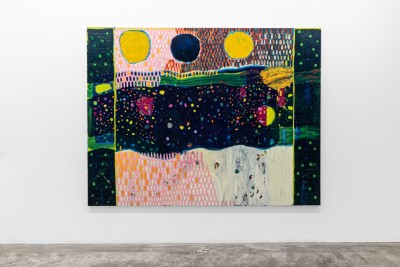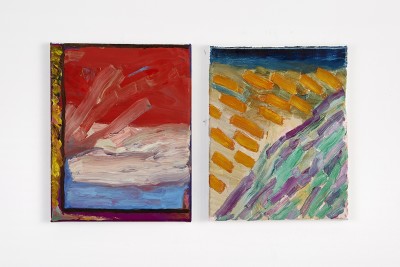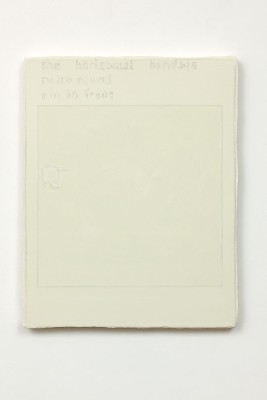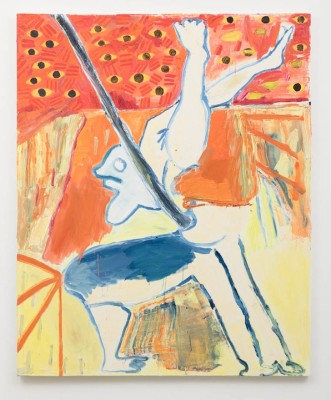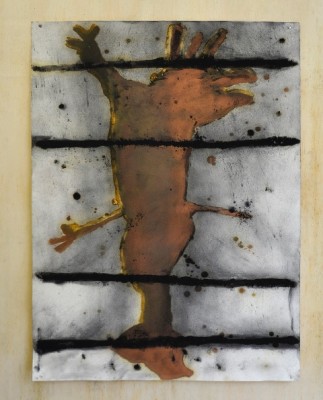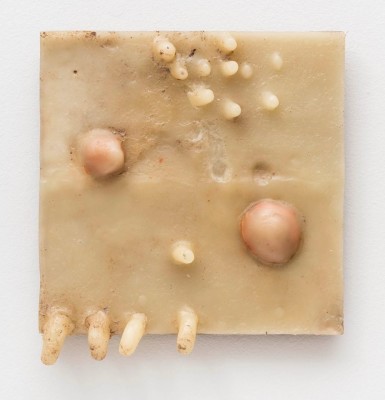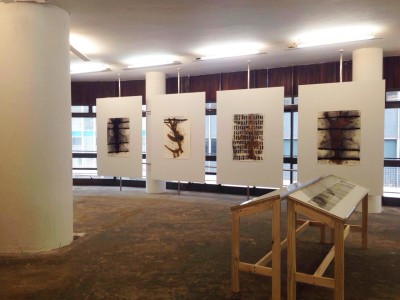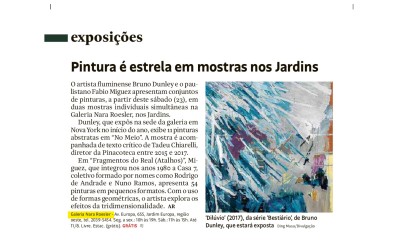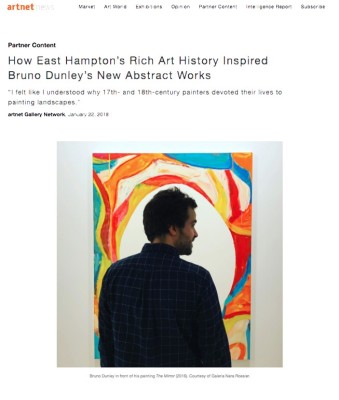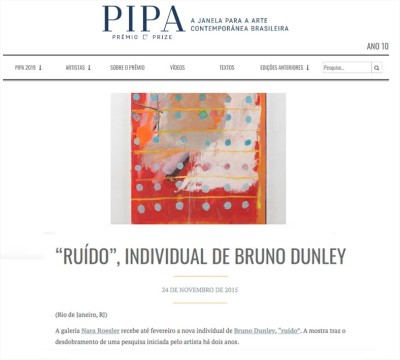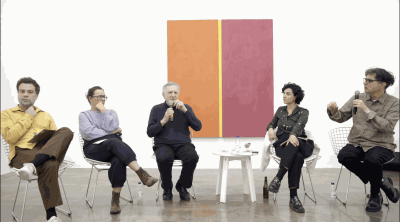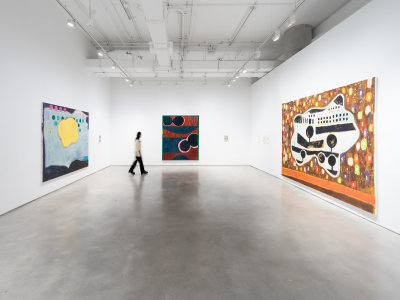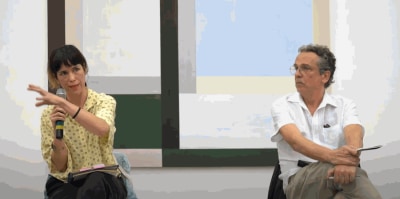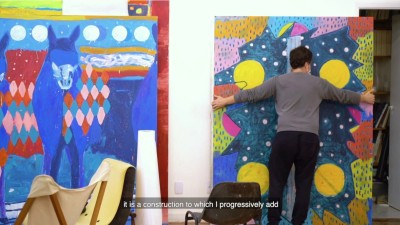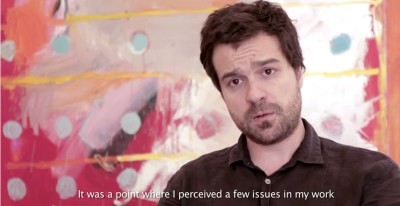The work of Bruno Dunley (b. 1984, Petropolis, Brazil) questions the specificity of painting, particularly in relation to representation and materiality. His paintings depart from carefully constructed compositions, which he gradually begins to correct,alter, and cover up, frequently revealing the lacunae in the apparent continuity of perception. Bruno Dunley is part of a new generation of Brazilian painters called 200e8 group. The collective, based in São Paulo, was founded with a common interest in painting, to enable its eight members to develop a critical approach to painting within the contemporary art scene. Dunley’s work begins with found images and with an analysis of the nature of painting, where language codes such as gesture, plane, surface, and representation are understood as an alphabet. Recently, his practice has shifted towards gestural abstraction, all while maintaining his interest for representation.
As stated by the artist “I see my work as a series of questions and affirmations about the possibilities of painting, about its essence and our expectations of it.” Often, a single color predominates the surface of his compositions, establishing a minimalist language and a meditative quality, that is frequently addressed in critical texts about his work. More recently, the artist has shown an interest for more aggressive composition, expressed through vibrant and contrasting colors. The 200e8's practices stipulate that stable or preconceived ideas about artistic processes should be abandoned, and procedures continually reformulated. In the work of Dunley, promises are made and consequently broken, testing the limits of the viewer’s tension.
Bruno Dunley lives and work in São Paulo. Recent solo shows and projects include: Clouds, at Nara Roesler (2023), in New York, USA; Virá, at Nara Roesler (2020), in São Paulo, Brazil;The Mirror, at Nara Roesler (2018), in New York, USA; Dilúvio, at SIM Galeria (2018), in Curitiba, Brazil; Ruído, at Nara Roesler (2015), in Rio de Janeiro, Brazil; e, at Centro Universitário Maria Antonia (CEUMA) (2013), in São Paulo, Brazil. He participated in the 33th Bienal de São Paulo, São Paulo, Brazil (2018). Recent group shows include: Entre tanto, at Casa de Cultura do Parque (CCP) (2020), in São Paulo, Brazil; Triangular - Arte deste século, at Casa Niemeyer (2019), in Brasília, Brazil; AI-5 50 anos – Ainda não terminou de acabar, at Instituto Tomie Ohtake (ITO) (2018), in São Paulo, Brazil; 139 X Nothing but Good, at Park – Platform for Visual Arts (2018), inTilburg, The Netherlands; Visões da arte no acervo do MAC USP 1900-2000, at Museu de Arte Contemporânea da Universidade de São Paulo (MAC-USP) (2016), in São Paulo, Brazil; and Deserto-modelo, at 713 Arte Contemporáneo (2010), in Buenos Aires, Argentina. His works are included in important institutional collections, such as: Instituto Itaú Cultural, São Paulo, Brazil; Museu de Arte Contemporânea da Universidade de São Paulo (MAC-USP), São Paulo, Brazil; Museu de Arte Moderna de São Paulo (MAM-SP), São Paulo, SP, Brazil, and Pinacoteca do Estado de São Paulo, São Paulo, Brazil.


